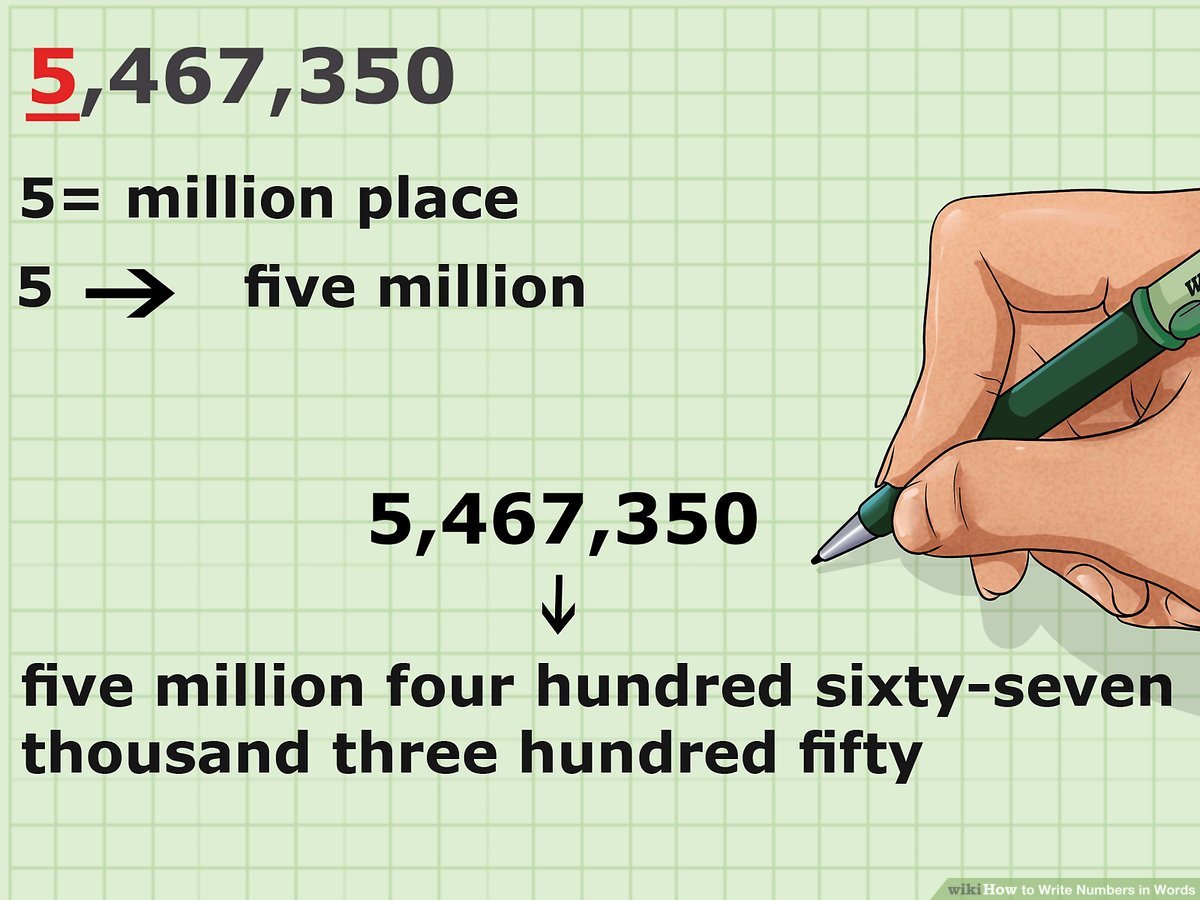Writing numbers as words instead of using the numeric digits is a writing technique that adds variety and style to one’s writing. Understanding the conventions of writing numbers in words can improve the readability and professionalism of documents, from legal contracts to novels. In this article, we will explore when and how to write numbers as words effectively.
Why Write Numbers as Words
There are several key reasons why writers may choose to spell out numbers rather than just using the numeric figures:
Legal Documents
In legal documents like contracts or affidavits, numbers are often written out to prevent confusion and fraudulent alterations of important details like dates, money amounts, and percentages.
Improved Readability
Spelling small numbers can make text more readable and user-friendly. Reading “one hundred fifty dollars” is simpler than reading “150 dollars” for many.
Stylistic Choice
Using words for numbers can also be a stylistic choice to make writing more conversational and less technical in tone.
When to Write Numbers as Words
There are some standard conventions to follow regarding when numbers should be spelled out versus written in numeric form:
At the Beginning of a Sentence
It is customary in English to write out a number if it begins a sentence. For example, “One hundred people attended the event” is preferred over “100 people attended the event.”
Numbers Below Ten
Numbers below 10 are typically written out in ordinary prose, such as “three birds” or “nine options.” However, this can vary based on context and personal preference.
Round Numbers
Round numbers like “one hundred” and “ten thousand” also lend themselves well to being written out for stylistic enhancement.
Guidelines for Writing Numbers as Words
Here are some key guidelines to follow when writing numbers as words:
Hyphenate 21 to 99
When numbers 21 through 99 are spelled out, they should be hyphenated, as in “thirty-one days” and “seventy-two participants.”
And for Fractions
Fractions should also include hyphens between the whole number and fraction, like “two-thirds majority.”
Write Out Ordinals
Ordinal numbers indicating order, like 1st, 2nd, 3rd, should be written out as words, such as “first place” and “twenty-third in line.”
Singular and Plural Forms
Understanding singular and plural forms for numbers is essential:
Singular Numbers
Singular numbers take singular verbs and pronouns. For example, write “Ten miles is too far to walk.”
Plural Numbers
However, some numbers ending in zero take plural verbs and pronouns when referring to countable items, like “Fifty people are attending the lecture.”
Irregular Plural Forms
Some numbers have irregular plural forms, like writing “women” instead of “womans.” These should be memorized.
Decimals, Percentages, and Money
Here are conventions for writing out decimals, percentages, and monetary amounts as words:
Writing Out Decimals
Decimals are written out using fractions, such as “one and two-tenths meters.”
Percentages in Words
Write out “percent” rather than using the % symbol, like “a fifty percent chance of rain.”
Monetary Amounts
For money, write out the dollar amount and then write “cents” for the cents amount. For example, $4.35 would be “four dollars and thirty-five cents.”
Units of Measurement
There are additional rules specific to writing out various units of measurement:
Length and Distance
Write out units of length and distance like “miles” and “inches.” For example, “The race is 26 miles and 385 yards long.”
Weight Units
Spell out weight measurements units like pounds and ounces using abbreviations: “The package was 5 lbs. 3 oz.”
Time Units
Write abbreviations without punctuation for time units like “hr.” for hours and “sec.” for seconds. For example, “The process takes three hrs and thirty sec.”
Roman Numerals
Roman numerals like I, II, III should only be used for specific purposes like numbering royalty, chapters in a book, or model numbers. Roman numerals are written out by adding together values: “XX” is written out as “twenty.”
Very Large Numbers
Use words to make very large numbers easier to read:
Million = 1,000,000 Billion = 1,000,000,000
So “358 million” is simpler than “358,000,000” for comprehension.
Additional Tips
Here are some other useful tips:
Consistency
Be consistent in how numbers are handled throughout a document for clarity. Pick one style and stick with it.
Clarity
In technical contexts with many numbers, using digits may improve readability by allowing comparisons at a glance because the numbers visually line up.Evaluate the context to determine if writing numbers as words improves or reduces clarity.
Common Errors
Some common errors include:
- Forgetting hyphens in numbers 21-99
- Using inconsistent formatting within a document
- Confusing singular and plural forms
Carefully proofreading numbers written as words is essential. Having another person read over a document can help catch errors.
Applications
Writing out numbers as words has many applications across genres:
Creative Writing
In prose, memoirs, and other creative writing, spelling small numbers can make the writing more lively and conversational in tone.
Technical Writing
In technical documents, words may clarify concepts while numbers are still used for precision with data and statistics. Strategic use of written numbers improves comprehension.
Business Writing
In business contexts like marketing materials and annual reports, using words for large round numbers can make details like financial data more readable for general audiences.
The Future of Numbers in Writing
Even as numeric digits dominate most writing in the digital age, there is still an important place for writing numbers as words. As long as we communicate with language, we will need the clarity, precision, and readability provided by translating numbers into words effectively. Mastering the conventions provides writers with an invaluable tool for better communication.
Conclusion
Writing numbers as words instead of digits follows a range of standards and best practices adapting to diverse writing contexts. Learning guidelines around spelling out numbers in sentences, hyphenating quantities for readability, handling plural versus singular forms correctly, and maintaining consistency in usage is key for all writers looking to incorporate numeric details into articulate text. Considering stylistic factors like tone and audience comprehension allows writers to make informed choices about when writing numbers as words can elevate their work.
Frequently Asked Questions
Q: Is it true that all numbers beginning sentences should be written out?
A: Yes, it is standard practice in English writing to fully write out any number appearing at the start of a sentence, even very large numbers. For example, “One million people voted in the election.”
Q: Should I write out all numbers in fiction novels and memoirs?
A: In creative writing projects like novels or memoirs, most writers choose to spell out small numbers under 10 to retain a natural, conversational style. Occasionally including some variation, like mixing in numerals, can also work stylistically. Evaluate what fits the context best.
Q: What about very precise numbers like statistics?
A: For precise numbers related to scientific, technical, or statistical details, numeric digits should be used for precision instead of writing numbers as words.













